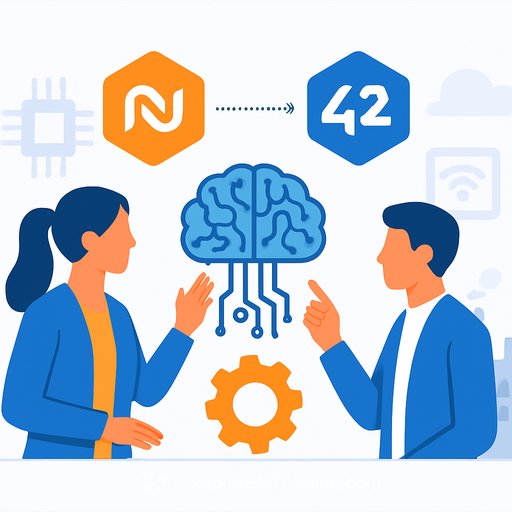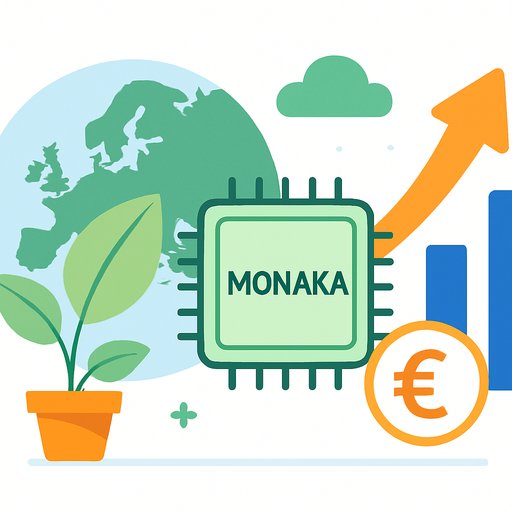Avalon Labs Chooses BNB Chain for AI + RWA Market Launch - What Product Teams Need to Know
Updated October 31, 2025
Avalon Labs is launching its integrated AI and real-world asset (RWA) marketplace on BNB Chain first. The rollout includes an AI-model marketplace and a Commercial Rights Tokenization standard, both deployed on BNB Chain as the initial venue.
Why BNB Chain for the first launch
BNB Chain offers low fees, high throughput, and fast finality - the basics you want when your product depends on frequent microtransactions and global users. It's EVM-compatible, which lowers integration cost and speeds up iteration for teams already shipping on Ethereum tooling.
For teams planning cross-chain later, starting on BNB Chain provides a clean testbed for pricing, incentives, and UX before expanding liquidity and distribution. If you need the technical docs, start here: BNB Chain documentation.
Inside Avalon's tokenized AI economy
Avalon is packaging AI as "AI-Model-as-a-Service." Instead of renting GPUs or running brittle training pipelines, enterprises and developers buy access to pre-trained, performance-tuned reinforcement learning models via tokens. Think of it as API access with on-chain metering and permissions.
Token-gated access means you can control usage, budget, and scale programmatically. For product teams, that translates into simpler cost modeling, easier integration, and faster time-to-value versus rolling your own ML infra.
Commercial Rights Tokenization (RWA)
Avalon is also introducing a Commercial Rights Tokenization standard on BNB Chain. The goal: convert model commercial rights and usage terms into programmable assets. That makes licensing, access tiers, and revenue sharing enforceable in code - not just in contracts and PDFs.
This matters if you're building AI features that depend on third-party models. You get clearer rights, cleaner audits, and the option to automate payouts to contributors or rights holders.
BTCFi products: USDa and why it's relevant
Avalon's ecosystem includes BTCFi components, headlined by USDa - a stablecoin with debt positions backed by Bitcoin (BTC). Users can mint USDa by depositing collateral such as FBTC or by swapping USDT at a 1:1 ratio.
For product teams, a BTC-backed stablecoin can help with pricing AI usage in a stable unit while keeping treasury exposure aligned with BTC. It's also useful for predictable billing and minimizing FX noise in usage-based models.
Build implications for product development
- Access and billing: Implement token-gated endpoints for model inference. Tie usage meters to on-chain balances and set rate limits per token tier.
- Pricing model: Start with simple per-call pricing. Add volume tiers, credits, and prepaid pools for enterprise accounts.
- Compliance for RWA: If you tokenize rights, plan KYC/KYB where required and log license terms on-chain for auditability.
- Custody and treasury: Decide where USDa, USDT, and BTC collateral live. Define policies for hot vs cold storage and bridging risk.
- Latency strategy: Route inference off-chain, commit metering on-chain in batches to keep UX snappy.
- DevOps and reliability: Provide fallback models and graceful degradation if the primary model or chain RPC is down.
- Observability: Track per-tenant usage, token balances, failed calls, and abnormal patterns to prevent abuse.
- Interoperability: Keep an abstraction layer for future multichain expansion so you don't hardwire to a single chain.
Risks and trade-offs to watch
- Chain concentration: Launching first on a single chain is fast, but it concentrates liquidity and infra risk. Plan a clear path to multichain if your users ask for it.
- Stablecoin and collateral risk: USDa depends on BTC collateral and mint/burn mechanics. Stress-test liquidity, peg stability, and redemption flows.
- Model quality and drift: Pre-trained models reduce setup effort, but you still need benchmarks, SLAs, and a retraining schedule. Publish these.
- Licensing clarity: Tokenized rights help, but work with legal early to ensure enforceability across jurisdictions.
30-day product plan (practical)
- Week 1: Integrate wallet + token-gated API. Stand up a metering service that records usage on-chain in batches.
- Week 2: Ship a minimal developer dashboard with balance, usage, and alerting. Define pricing and throttling rules.
- Week 3: Add USDa billing option and a simple redemption flow for refunds or credits. Pilot with 2-3 design partners.
- Week 4: Draft on-chain license terms for one model using the Commercial Rights Tokenization standard. Run a legal and security review.
Why this matters for product teams
This move lowers the friction to ship AI-powered features. You get ready-to-use models, on-chain access control, and clear commercial terms - the pieces most teams struggle to stitch together. If you've been blocked by infra and licensing, this unblocks your roadmap.
If your team needs to upskill on AI productization and go-to-market, explore practical resources here: AI courses by job role.
Your membership also unlocks:






